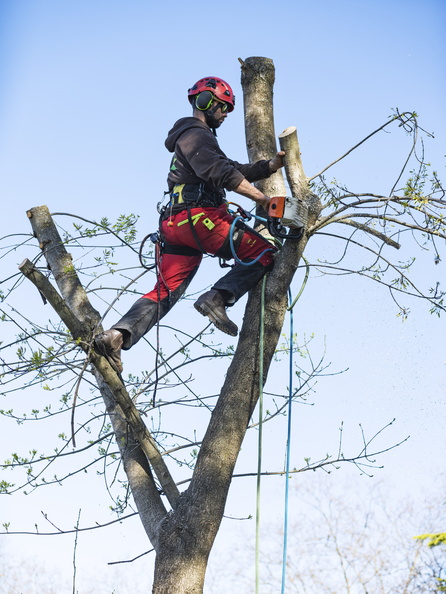Professional Tree Service: Ensuring the Longevity and Beauty of Your Trees
by Eva Braughly Freelance Writer/Blogger
Tree service encompasses a wide range of activities aimed at maintaining the health, safety, and aesthetic appeal of trees. Whether it's understanding signs of disease, performing regular health checks, or knowing the best practices for pruning and tree removal, effective tree service is essential for any landscape.
Understanding Signs of Disease and Pest Infestation
The first step in maintaining tree health is recognizing the signs of disease and pest infestation. Common symptoms include discolored leaves, premature leaf drop, wilting, and the presence of visible pests or unusual growths on the bark. Fungal infections might show as unusual growths or decay on tree trunks and branches. Early detection is crucial as it can often prevent the spread of disease and minimize damage. Regularly inspecting your trees for these signs can help catch problems before they escalate.
Importance of Regular Health Checks to Prevent Tree Illnesses
Regular health checks are vital to preventing tree diseases and ensuring their longevity. These checks involve assessing the soil quality, hydration levels, and physical structure of the trees. Arborists or tree care professionals can also perform more detailed assessments, including root health checks and risk assessments for potential limb failure. By identifying issues early, appropriate interventions, such as soil amendments, proper watering practices, or pest control measures, can be implemented timely.
Different Kinds of Tree Service
Tree service can be categorized into several types, each addressing specific aspects of tree care:
Pruning: Essential for controlling growth, enhancing tree structure, and removing potentially hazardous branches.
Tree Health Management: Involves applying fertilizers, managing pests, and curing diseases.
Tree Removal: Necessary when a tree is dead, diseased beyond recovery, or posing a safety hazard.
Emergency Tree Care: Includes services like storm damage cleanup and immediate removal of fallen or hazardous trees.
Each type of service requires a unique approach and expertise, often necessitating the involvement of certified professionals.
Best Practices for Pruning to Enhance Tree Health and Aesthetics
Pruning is not just about cutting branches; it's about shaping the future health and appearance of the tree. Best practices for pruning involve:
Timing: Pruning during the dormant season helps prevent disease and allows trees to heal faster.
Technique: Make clean cuts at the right location, just outside the branch collar, to facilitate proper healing.
Purpose: Removing dead, diseased, or weak limbs to improve structure and reduce the risk of branch failures.
Pruning should also take into account the specific growth patterns and needs of the tree species to enhance its natural form and beauty.
Differences between Pruning Young and Mature Trees
Pruning young trees is about establishing a strong structural framework for future growth. It typically involves selecting the strongest and best-placed branches to form the tree’s main structure and removing competing branches. This early intervention helps prevent more severe corrections later in the tree's life.
In contrast, pruning mature trees is more about maintenance and safety. It focuses on removing dead or dangerous limbs and addressing any structural issues that could lead to branch failures. Care must be taken not to remove too much foliage, which can stress the tree and lead to health problems.
When and Why Tree Removal is Necessary
Tree removal is a last resort but is sometimes necessary for several reasons:
Safety: Trees that have become unsafe due to structural issues or diseases pose a risk to people and property.
Health: Removing diseased trees can prevent the spread of pathogens to other vegetation.
Construction and Landscaping: Sometimes trees need to be removed to allow for new construction or landscaping projects.
Removal should always be handled by professionals to ensure it is done safely and with minimal impact on the surrounding environment.
Safety Measures and Techniques for Effective Tree Removal
Tree removal can be hazardous and requires careful planning and execution. Safety measures include:
Assessment: Thoroughly assess the tree and its surroundings to plan the removal process.
Equipment: Using proper tools and safety gear, such as chainsaws, helmets, and harnesses.
Techniques: Techniques like sectional dismantling, where a tree is taken apart piece by piece, are used in confined spaces to prevent damage to nearby structures.
Professionals also use cranes and other machinery to manage large trees and ensure that the removal is conducted as safely as possible.
Proper tree service is an intricate blend of science and art, requiring knowledge, skill, and attention to detail. Whether it's through regular maintenance, strategic pruning, or the necessary removal of a tree, these services are vital for maintaining the health, safety, and beauty of our landscapes. Engaging with experienced arborists and tree care professionals can help ensure that your trees receive the care they need to thrive for years to come.
Sponsor Ads
Created on Apr 26th 2024 09:51. Viewed 56 times.



